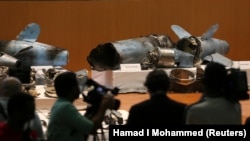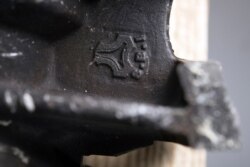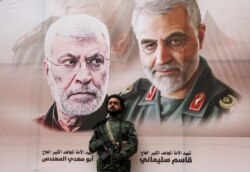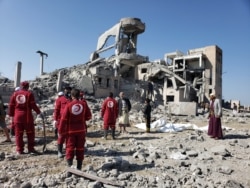Iran has rejected a United Nations report concluding that the cruise missiles used in last year’s attack on Saudi oil facilities and an airport in the kingdom were of “Iranian origin.”
According to the Associated Press, U.N. Secretary General Antonio Guterres outlined the results of the investigation to Security Council members, but the report itself has not been released. The Sept. 14, 2019, attacks hit Saudi-Aramco facilities and shut down more than 5% of global oil supplies, causing a spike in oil prices.
Iran called the U.N.’s conclusions “baseless” and said the world body is “politically motivated” and “extremely unprofessional.”
Russia also echoed Iran’s critique, stating that the U.N.’s findings were based not on “convincing evidence” but merely “some images such as media pictures of military exhibitions.”
On June 13, Iran’s U.N. ambassador, Majid Takht Ravanchi, said on Twitter: “‘Iranian origin’ of arms is a fallacy. UN Secretariat lacks capacity, expertise & knowledge to conduct investigations.” https://en.irna.ir/news/83820417/Envoy-terms-Iranian-origin-of-arms-as-fallacy
The claim about U.N. capabilities is false.
Analysts told Polygraph.info that there is no doubt about the U.N.’s expertise and capacity to authoritatively investigate such cases.
“The U.N. Panel of Experts has a high level of forensic weapons intel capability, both internal and through contacts and contractors, to identify and trace partial and complete weapons system,” said Michael Knights, senior Mideast analyst at the Washington Institute.
“They use U.N.-appointed, long-term subject matter experts who are very picky about chain of custody and evidencing,” Knights said. “The Iranian comment is not accurate, and Iran never replies to information requests from the U.N. investigators.”
Tim Michetti, a private-sector expert on illicit weapon flows in Africa and the Middle East, also lauded the U.N.’s work on arms. Working together with independent weapons technical intelligence organizations, the U.N. “has produced the best open-source information to date on illicit transfers of Iranian materiel,” he said.
The U.N. has not revealed which of its teams were involved in the Saudi Aramco attack investigation. Asked about the findings, the U.N. media office told Polygraph.info further details may be made public after the Security Council holds a private meeting on June 24.
Yemen’s Iran-supported Houthi rebels, known as Ansar Allah, claimed responsibility for the attack, as they have for several dozen other attacks on Saudi Arabia since 2015, when Riyadh entered the war in Yemen to back the government in Sanaa.
The U.N. investigators previously confirmed the Houthi forces were responsible for most of those earlier attacks, and that the weapons they used were of “Iranian origin and shipped from Iran.”
In the case of the Sept. 14 attack, however, the U.N. team said the Houthi forces were not responsible. That’s because the missiles that struck Saudi targets came from “a north/northwestern and north/northeastern direction, rather than from the south, as one would expect in the case of a launch from Yemeni territory.”
In January, Reuters reported that the U.N. investigators were not tasked to identify the perpetrators. Still, their preliminary report said the Houthi forces were receiving “assault rifles, rocket propelled grenade launchers, antitank guided missiles, as well as more sophisticated cruise missile systems.”
“Some of those weapons have technical characteristics similar to arms manufactured in Iran,” Reuters said, quoting the U.N. investigators.
Writing at the time, Michetti said that the U.N. investigation “may have been stymied somewhat by U.S. exploitation teams, who initially combed through and removed some of the weapon debris.”
But he noted that the U.N. “requires near-certain evidence” before making attributions, and that its standards of transparency and verification require that it “sidestep controversial findings.”
Some wreckage from the Saudi Aramco attack is on display at the Iranian Materiel Display (IMD) at Joint Base Anacostia-Bolling in Washington, D.C., along with other Iran-manufactured weaponry that the U.S. has seized over the years.
The Pentagon launched the IMD three years ago, to “present evidence that Iran is arming dangerous groups with advanced weapons, spreading instability and conflict in the region.” The U.S. maintains the exhibit is proof of “Iranian proliferation into Yemen, Afghanistan and Bahrain.”
The U.N. Secretariat has traveled a number of times to Saudi Arabia and to Washington, D.C., to examine the Iranian weapons and the debris, Guterres said last December, and was able to independently verify the Iranian origin of the weapons.
In its critique of the U.N. report, Iran took a swipe at the prevalence of U.S. arms, citing “the origin of sophisticated weaponry being poured into our region by the U.S. and its allies killing and maiming innocent people is quite obvious.”
The Trump administration has kept the arms pipeline open to Saudi Arabia despite criticism from human rights groups and others.
Both Iran and Yemen are under a U.N. arms embargo. Iran has been accused of violating the ban by smuggling weapons to state and non-state regimes and groups in the Middle East and in Africa.









